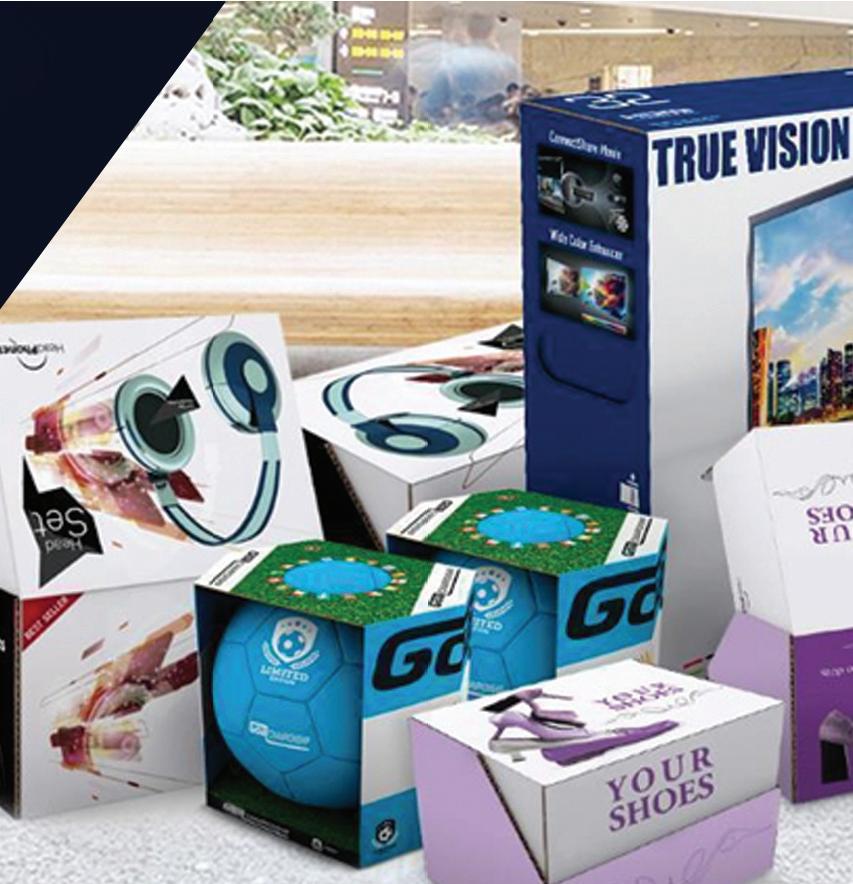
3 minute read
Virtual Packaging: Digital Solutions for
Virtual Packaging: Digital Solutions for Green Approaches
The Gronau-based digital signage software specialist Videro AG and Fraunhofer UMSICHT want to exchange real packaging for digital variants in order to protect the environment.
Advertisement
The digital signage software specialist Videro AG and the Fraunhofer Institute for environmental, safety and energy technology Fraunhofer UMSICHT created a new concept in order to reduce plastic waste and protect our environment. The project „Vir2pac – Digital Environmental Protection“ aims to find out how secondary packaging for products could be strongly or completely eliminated and replaced with digital variants.
First Steps: Protection vs. Information The most important function of packaging is to protect the contents – especially when it contains food. In addition, legally prescribed consumer information must be provided on product containers. But packaging is increasingly being used as an advertising medium and became part of the brand image. The idea behind Videro’s and Fraunhofer’s concept: Information and advertising could still be displayed,

while Vir2pac allows to significantly reduce the amount of waste produced at the same time. brand-specific advertising are displayed – to the consumer it now looks like conventional packaging.
The first step is to separate the functions “protection” and “information”. There’s no doubt that reduced or adapted packaging is still necessary for product protection. Information, brand image and advertising message are linked via a label and provided virtually via the existing digital infrastructure and transferred to digital interfaces – such as the customer’s smartphone or fixed screens at the point of sale. But the vision goes one step further:
The Concept of “Vir2pac – Digital Environmental Protection”
The new “Vir2pac” concept enables physical packaging to assume only product protection and thus returns to its original function. Packaging can be simplified according to the design-for-recycling principle or, depending on the packaged product, optimized for multiple use. By saving material, packaging waste and energy consumption are reduced.
And this how it works: The consumer receives augmented reality glasses at the entrance when visiting the retail store. The products in supermarkets and similar stores are packaged in simple packaging reduced to a protective function. But as soon as the user puts on the AR glasses and looks at a product, information and As part of the implementation, Videro AG provides product recognition, allocation, management and, above all, platform-neutral presentation of all digital content with the help of its software.
„We are aware of the disruptive potential, which is why we would like to engage in discourse with consumers, politicians and other companies in order to advance digital environmental protection,“confirms Johannes Büld, CEO from Videro AG.
Further Possibilities of Virtual Packaging
The digitalization in form of virtual packaging offers further possibilities: For example, digital added values such as previous purchases, data sheets, recipe suggestions or background information on production conditions or origin can be visualized in the customer’s field of view. In addition, the optimized design and targeted use of materials as well as digitalization („smart packaging“) enable improved recycling and possibilities for digitally supported material and waste stream management. In order to check the ecological effects, Videro and Fraunhofer created an evaluation matrix within the framework of the project.























